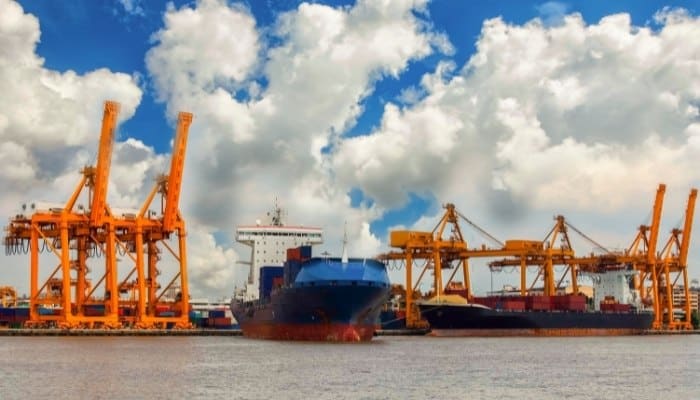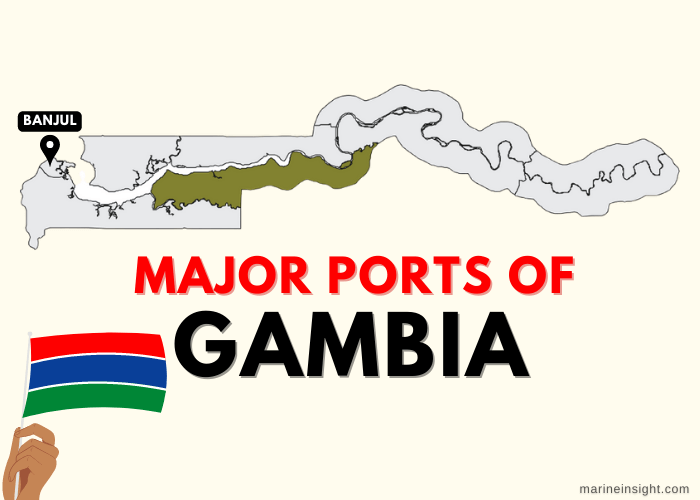Major Ports of Gambia
The Gambia is a West African nation surrounded by Senegal on all sides, except for the Atlantic Ocean on the west.
The Gambia River dissects the country, and the whole country is basically a convergence of the Northern and Southern banks of the river.
Banjul, the capital of Gambia is the largest metropolitan city of the country and houses the only major seaport of the country. Besides Banjul, Serekunda and Brikama are the two largest cities in the country.
Gambia has been the theatre of the slave trade in the early 16th century during the Portuguese occupation, and the British occupation in the latter half of the 17th century.
The Gambian colony was set up around the river Gambia to facilitate the slave trade, along with many other West African nations. Poverty has since prevailed, although many social reforms and foreign investment opportunities are in the pipeline to improve the socio-economic conditions of the country.
The Economic Community of Western African States (ECOWAS) is the primary driving force behind developing the economy of its 15 member nations of West Africa.
The ECOWAS is a regional socio-economic and political union and is considered one of the pillars of economic development of the African Continent. The main aim of ECOWAS is to achieve economic self-sufficiency by creating an integrated trade bloc between the member countries.
It also functions as a military and political deterrent to maintain peace in the region. The member nations regularly send in joint military forces in incidents of political unrest or natural disasters.
The Port of Banjul is the only most important port of the country which connects the Gambia to the rest of the world through the Atlantic Ocean.
The Gambia has a total coastline of 80km on the Atlantic Ocean and has three eco-zones viz. the Guinean savanna, the West Sudanian savanna, and the Guinean mangroves. These zones are terrestrial zones that have a scattered population of the aboriginals and some tribes.
Port of Banjul: GMBJL
The administrative jurisdiction of the Port of Banjul extends from Buniadu point in the North to Cape Point in the South, and towards Dog Island to the west from Mainland Banjul city.
Both the port and the port city are located at the confluence of the Gambia River in the Atlantic Ocean. The main harbour is situated 27 nautical miles from the Atlantic Ocean.

The port is managed and operated by the Gambia Port Authority, which was established in the year 1972. Prior to 1965, the port was under the control of the British Empire.
After attaining freedom in 1965, the country administration worked towards socio-political reforms as well as the development of infrastructure for facilitating regional and international trade. The GPA is also a member of the Port Management Association of West and Central Africa.
The main facilities available at the Port of Banjul are Banjul Wharf and the New Banjul Jetty and Extension.
It has a container terminal, a bonded warehouse complex, an oil boom for loading and unloading crude oil and petroleum products.
The Port of Banjul is one of the safest ports in West Africa, and development activities are being continuously carried out to improve the port facilities.
The Port of Banjul sits on the Trans-West African Coastal Highway and is connected to Dakar and Bissau via the highway. The Trans-West African Coastal Highway passes through 11 other nations of the ECOWAS, which makes it one of the most important highways of the Western African Belt for facilitating trade.
Economy of Gambia: An Overview
The Gambia depends heavily on agriculture and agri-based products, mostly raw materials, to be used in different industries.
The economy is market-driven, which means that the commodity production, distribution and prices are driven by the demand-supply gaps.
Peanuts or groundnuts are cultivated in abundance, and it is produced for both exports and domestic consumption. The Port of Banjul serves as an export centre for groundnuts, as well as re-export of goods received from inland countries.
Tourism is another major driving force that supports the Gambian economy. The GDP of Gambia was estimated at USD 1.9B in 2020, while revenues from tourism witnessed a steady influx of USD 1.6 billion since 2017 till date. The exports of goods and services were estimated at USD 0.38B in 2019, while the imports were worth USD 0.64B in the same year.
Conclusion
The Gambia has been a strategic colony for both the British and the Portuguese Empire for a long time. The country borders literally mirror the Gambia River as it meanders down to the Atlantic Ocean. The widest stretch between the two sides of the borders is 50km which is evidence of the narrow strip of land that sits in between Senegal.
While the river is accessible nearly up to 300km inland from Banjul and has a number of barges along the stretch, Banjul is the only port that can handle international cargo.
The port facilities are still developing and may need additional foreign investment for further expansion. The maximum allowable draft at the harbour is only 8.5m which is another reason why large container ships and liquid bulk carriers cannot be allowed into the port as of now.
Future development of the region is driven by the mutual co-operation of the ECOWAS nations, as the Gambian port of Banjul is still a very significant spot of exports and imports in West Africa.
You might also like to read:
- 4 Major Ports In Cambodia
- 5 Major Ports In Switzerland
- 5 Major Ports Of Vietnam
- 10 Major Ports in Romania
- 3 Major Ports of El Salvador
- 7 Major Ports of South Africa
Do you have info to share with us ? Suggest a correction
Latest Maritime Knowledge Articles You Would Like:
Subscribe To Our Newsletters
By subscribing, you agree to our Privacy Policy and may receive occasional deal communications; you can unsubscribe anytime.
















